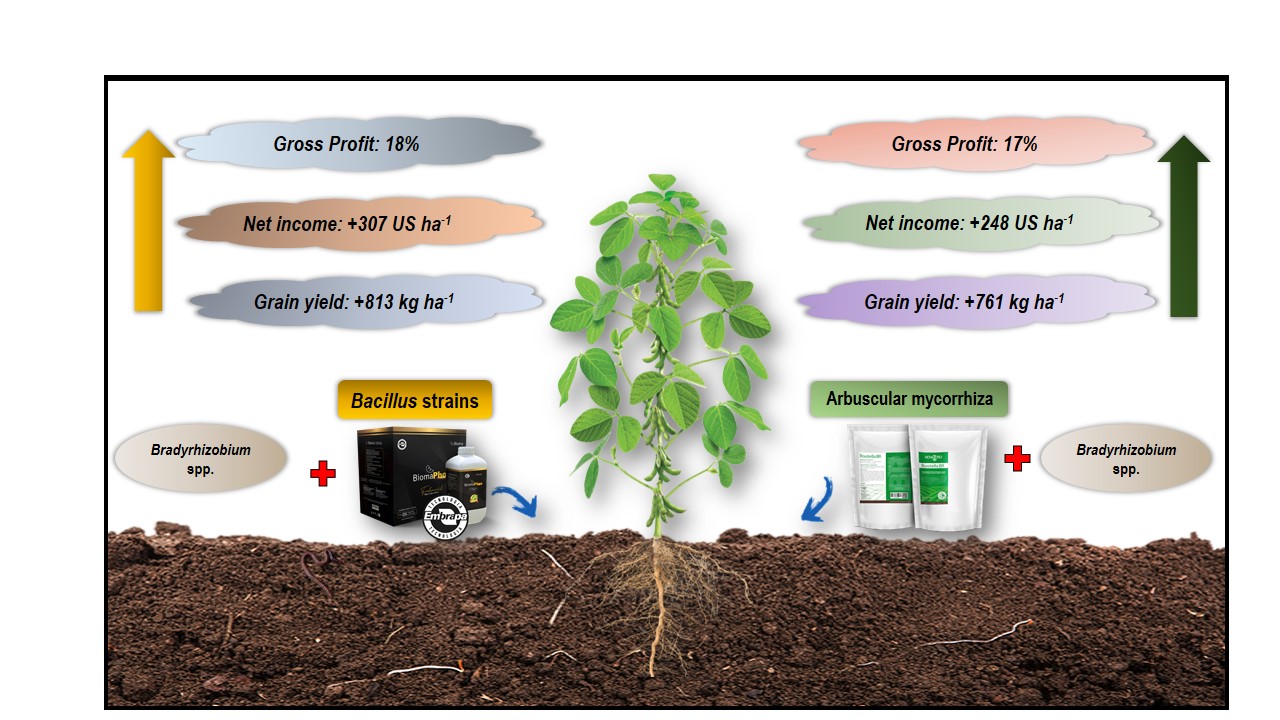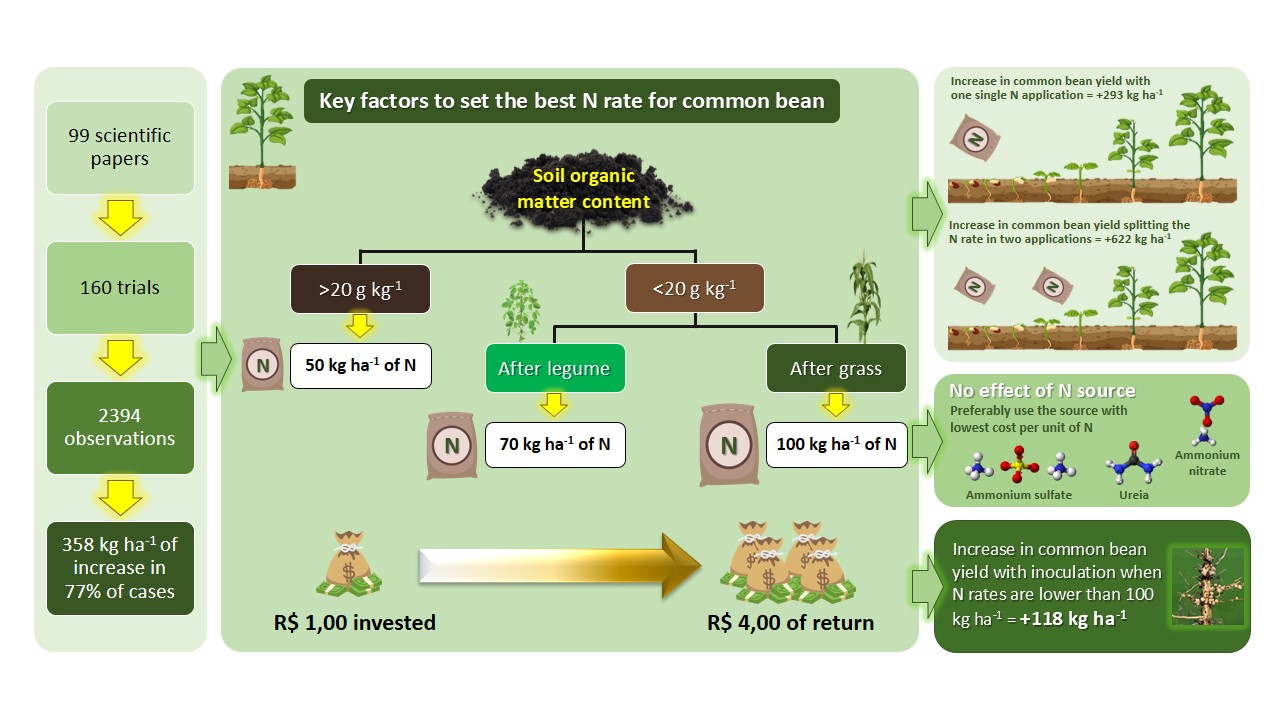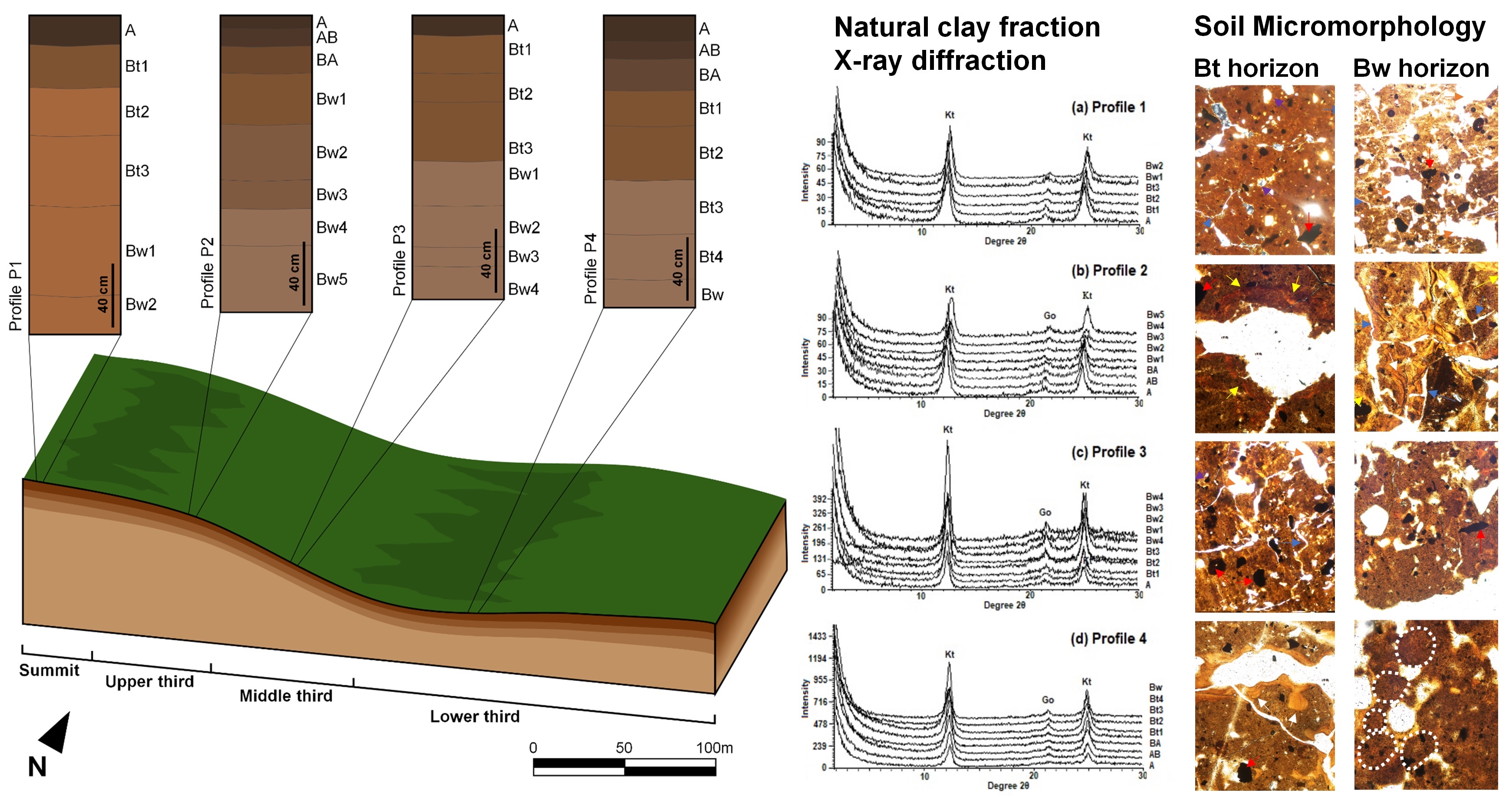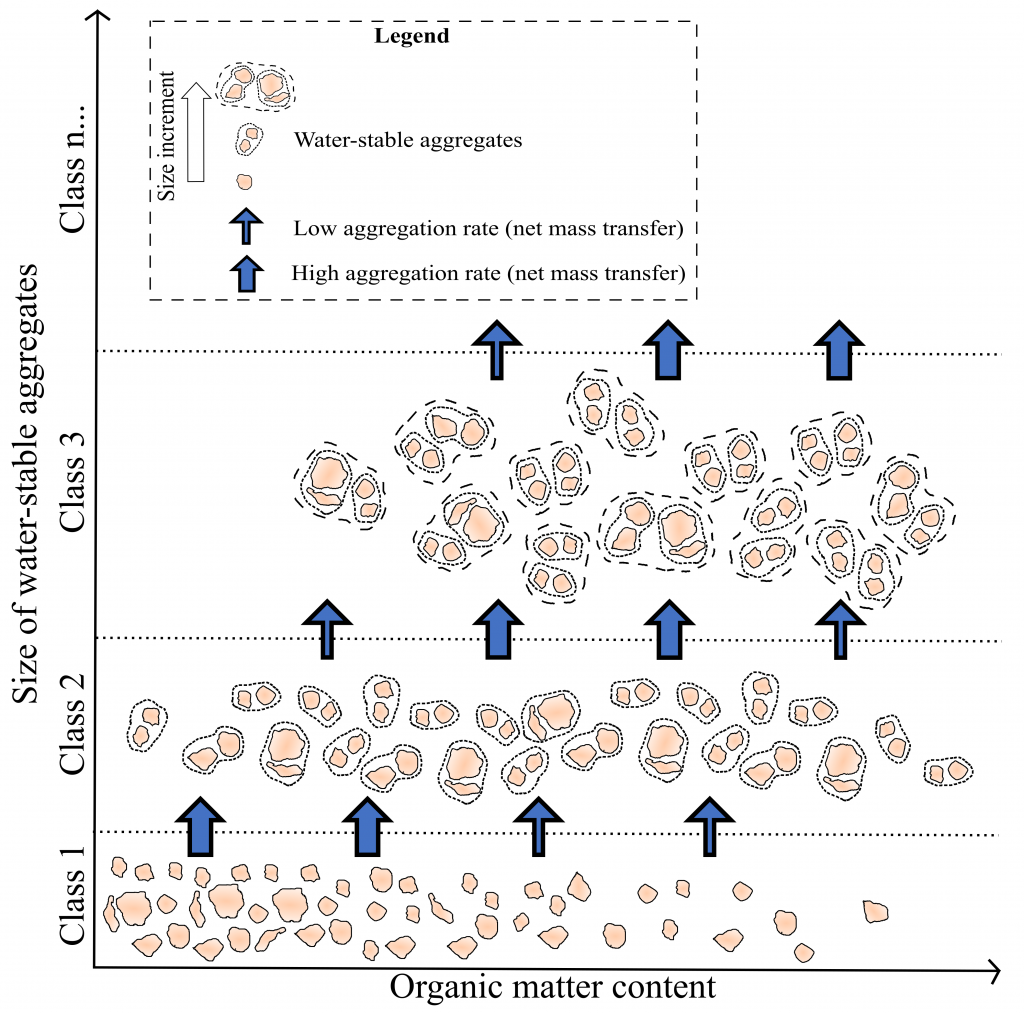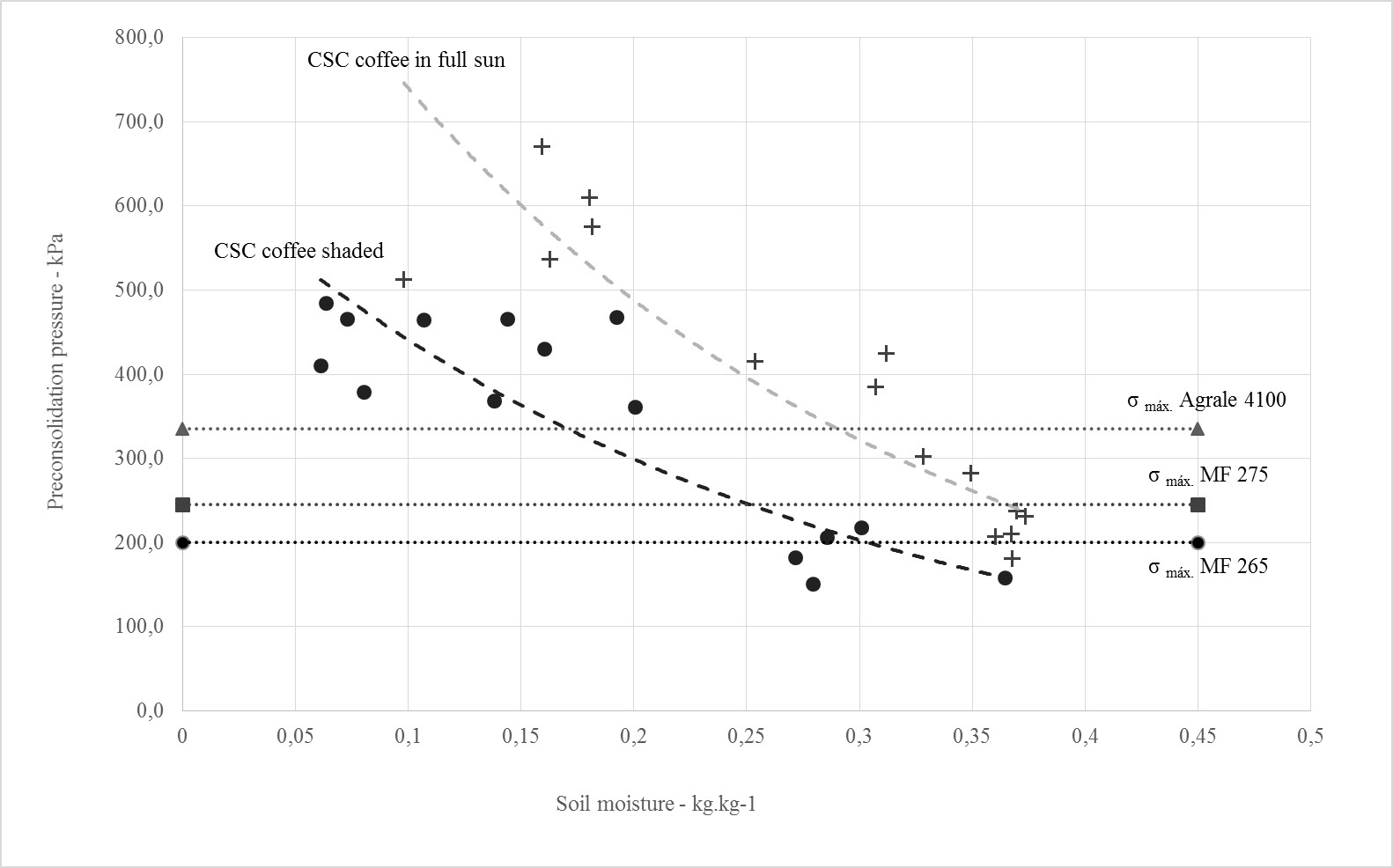Volume 46, 2022
Physical quality of sandy soils under orange orchards in Southern Brazil
22/jun/2022
ABSTRACT Sandy soils are characterized by low organic matter content and soil water retention and availability. Conventional tillage has been used for the implementation of orange orchards, but it exposes the soil to erosion and promotes accelerated oxidation of organic matter with negative impacts on the soil’s physical quality. The objective of this study was to evaluate the soil physical quality of sandy soils influenced by two soil tillage practices for planting the orange trees in areas after long-time under […]
Increase in yield, leaf nutrient, and profitability of soybean co-inoculated with Bacillus strains and Arbuscular mycorrhizal fungi
22/jun/2022
ABSTRACT Microorganisms in the soil and rhizosphere can release part of the total phosphorus in the soil through solubilization, mineralization, and an increase of the root absorption surface. The ability of phosphate solubilizing bacteria and mycorrhizal fungi to promote higher yield and profitability in co-inoculated soybean was investigated. For this purpose, field and greenhouse experiments were conducted in the years 2020 and 2021 in Brazil. In the field, the first factor was composed of microorganism application on soybean (simple inoculation […]
Potassium buffering capacity and corrective potassium fertilizer recommendations in soils from Southern Brazil
17/ago/2022
ABSTRACT Soils with low potassium (K) availability require corrective fertilization for grain crops. The recommended rate to increase K availability up to the critical level depends on the soil K buffering capacity (KBC). This study aimed to quantify the KBC and recalculate the rates necessary to reach the K critical level in 23 soils from Southern Brazil. Soil samples were incubated with six K rates, that were thus grouped according to CECpH7.0: below 7.5 cmolc dm-3 (0, 30, 60, 90, […]
Different managements in conventional sugarcane reform in sandy soils: effects on physical properties and soil organic carbon
07/jun/2022
ABSTRACT Sugarcane culture in Brazil has expanded the planting area to degraded pastures and sandy soils. Sugarcane field reform is carried out after five or more harvest cycles, with conventional tillage, followed by planting sugarcane, or growing soybeans or a cover crop. This study aimed to analyze the effects of these different managements in the conventional sugarcane reform on the physical properties and organic carbon in an Argissolo Vermelho distrófico arênico (sandy Ultisol), located at latitude 21° 13’ 40” south, […]
Common bean yield responses to nitrogen fertilization in Brazilian no-till soils: A meta-analysis
24/maio/2022
ABSTRACT Although numerous studies have been conducted with common bean regarding nitrogen (N) dose, time of application, and source in no-till (NT) soils in Brazil, the heterogeneity of the results makes it difficult to establish technical recommendations based on individualized studies. This meta-analysis aimed to rank the main factors influencing common bean response to N management in NT areas. The database consisted of 99 scientific papers that encompassed 160 trials and 2394 observations. In general, the probability of obtaining a […]
Genesis and transformation of basic rock-derived soils with shiny ped faces under tropical conditions
04/out/2022
ABSTRACT Soil evolves in landscapes in a natural process in which soil properties are gradually transformed. However, the transformation of argic to ferralic horizons in basic rock-derived soils under tropical conditions is poorly understood. Depending on the position of the soil profiles in landscape, evidence of pedogenetic transformation between different horizons might indicate the formation and destruction of aggregates with shiny faces. This study aimed to determine pedogenetic changes in basic rock-derived profiles in a toposequence, because soils derived from […]
Allometric equations for biomass and contents of macronutrients in a young Tectona grandis stand
23/set/2022
ABSTRACT Evaluations of biomass and nutrient contents in teak stands are necessary alternatives for avoiding early cutting to provide supplemental data for the plant module of fertilization recommendation systems. This study aimed to adjust allometric equations to estimate the accumulation of biomass and nutrient contents in teak plantations in the central region of Brazil. Plots in seminal and clonal stands contained 81 trees aged 75 months, that had not received previous fertilization or thinning. Additional clonal stands aged 15, 51 […]
Aggregation rate as a function of soil organic matter in heavy clayey Ferralsols
16/set/2022
ABSTRACT Heavy clayey Ferralsols are known for their high capacity to form water-stable macroaggregates. However, little is known about how different size classes of macroaggregates exchange mass with increasing organic matter content. This study aimed to characterize and detail aggregation dynamics with increasing organic matter content in these soils. Profiles of three heavy clayey Ferralsols were sampled to isolate the role of organic matter on the stability of aggregates. In this sampling scenario, a conceptual model was established to calculate […]
Load-bearing capacity and critical water content of the coffee plantation soil with management in full sun and shaded
06/set/2022
ABSTRACT New management practices applied to coffee crops may influence the soil’s capacity to tolerate vertical stresses. This paper aimed to evaluate the influence of two coffee crop management systems on the soil load-bearing capacity and critical soil water content to agricultural machinery traffic. This study was performed in the experimental area of the Federal Institute of the Southeast of Minas Gerais – Rio Pomba college, in Rio Pomba city, Minas Gerais, Brazil. Dystrophic Red-Yellow Oxisol (Latossolo Vermelho-Amarelo distrófico) (LVA7) […]
Phosphorus lability in a subtropical Acrisol under long-term integrated crop-livestock system: impacts of grazing management and cropping system
28/out/2022
ABSTRACT Studies on lability of soil phosphorus (P) under integrated crop-livestock systems (ICLS) are still scarce, especially for deep soil layers (more than 0.20 m depth) and different managements in the crop and livestock phase. Distinct management in these phases may lead to a different distribution of soil P pools according to its lability (labile, moderately labile, less labile and residual) and, consequently, the P availability for plant nutrition. This study aimed to determine the soil P pools, by P […]


